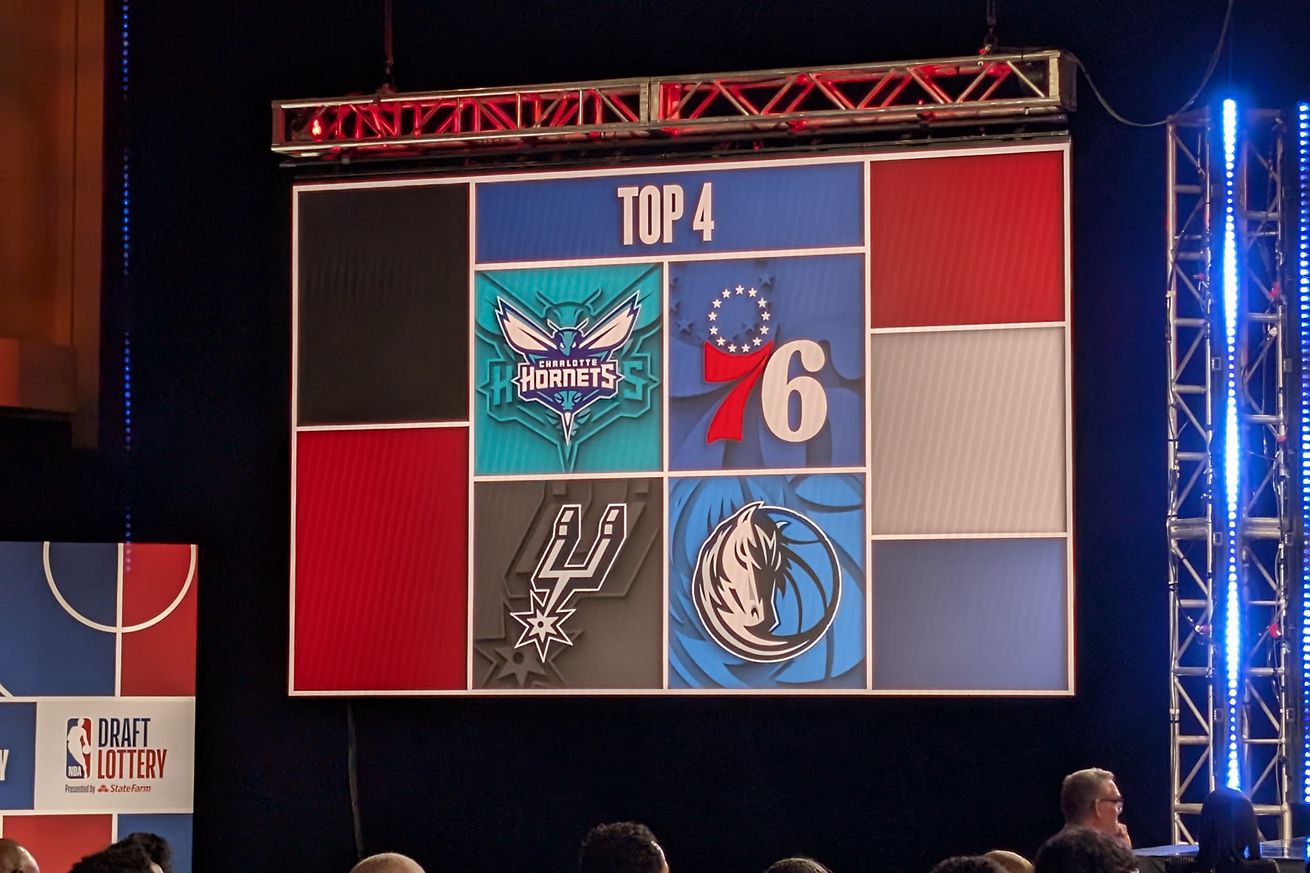
Winning the No. 3 overall pick is a huge boon to the Sixers, but it could hamper their chances of re-signing Guerschon Yabusele in free agency.
The Sixers were one of the biggest winners of the 2025 NBA draft lottery. They were in grave danger of sending their first-round pick to the Oklahoma City Thunder, but the ping-pong balls bounced in their favor and gifted them the No. 3 overall pick.
The Sixers likely won’t have a shot at Duke forward Cooper Flagg or Rutgers guard Dylan Harper, but they’ll have their pick of the litter from there. Regardless of whom they choose, that prospect will instantly become the Sixers’ fourth-highest-paid player heading into free agency.
That could put the Sixers in a tricky spot when it comes to re-signing Guerschon Yabusele.
The NBA’s rookie scale predetermines each first-round pick’s salary throughout their rookie contracts. Teams are allowed to offer as little as 80 percent or as much as 120 percent of the scale amount, although it’s conventional to offer the full 120 percent. The scale amount for the No. 3 overall pick this year is $9,257,400, which means whomever the Sixers select will likely cost $11,108,880 in 2025-26.
Joel Embiid, Paul George, Tyrese Maxey and Jared McCain alone will cost nearly $149.1 million next season. Adding the No. 3 pick at 120 percent of the scale amount will put the Sixers at nearly $160.2 million, or roughly $5.5 million above the projected $154.6 million salary cap, with only five players under contract.
With three players on max contracts, the Sixers were never going to have cap space this offseason. The bigger concern is their proximity to the $187.9 million luxury-tax threshold, the $195.9 million first apron and the $207.8 million second apron. They’d be only $27.7 million below the tax line, $35.8 million below the first apron and $47.6 million below the second apron with just those five players on their books.
Teams that go above the first apron aren’t allowed to take back more salary than they send out in a trade, can’t receive players via sign-and-trade, only have access to the taxpayer mid-level exception (projected to be $5.7 million next season) rather than the larger non-taxpayer MLE ($14.1 million) and lose access to the bi-annual exception ($5.1 million). Teams that go above the second apron lose access to any mid-level exception and can’t aggregate two smaller contracts in a trade for a bigger salary.
If Kelly Oubre Jr. ($8.4 million), Andre Drummond ($5.0 million) and Eric Gordon ($3.5 million) all pick up their player options as expected, the Sixers would have roughly $177.0 million in salary on their books. That would put them only $10.9 million below the tax line, $18.9 million below the first apron and $30.8 million below the second apron with only eight players under contract. If the Sixers pick up their team options on Adem Bona ($2.0 million) and Justin Edwards ($2.0 million), they’d be up to $180.9 million committed to 10 players, which would put them less than $7 million below the tax line, $15.0 million below the first apron and $26.9 million below the second apron.
Re-signing Quentin Grimes alone might push them above the first apron, which would eliminate the non-taxpayer MLE as an avenue to retain Yabusele. If they wanted to maintain access to the non-taxpayer MLE, they’d have to dump significant salary elsewhere or not re-sign Grimes. Depending how much Grimes receives in free agency, it might even be tough for the Sixers to stay far enough below the second apron to maintain access to the taxpayer MLE.
Luckily, the lottery was the last major variable for the Sixers heading into the offseason. They now know exactly how much money they have to allocate for their pick—or that they’re keeping their pick at all—which allows them to map out the rest of their offseason plans accordingly.
Granted, there’s no guarantee that the Sixers stay at No. 3. Flagg and Harper seem like they would have been no-brainer choices at Nos. 1 and 2, respectively, but the Sixers have an array of options at No. 3, including Baylor’s V.J. Edgecombe and Rutgers’ Ace Bailey. If they don’t see much of a difference between the prospects in that tier, it might behoove them to trade down to pick up additional assets.
The Sixers have financial incentive to trade down as well. The rookie-scale cap hits plummet precipitously outside of the top few picks, so the Sixers could carve out a few extra million dollars in financial flexibility by trading down. For instance, the No. 8 overall pick would cost them only $6.9 million next season instead of $11.1 million.
Now that the lottery gods smiled upon the Sixers, we’ll inevitably spend the next six weeks debating all of their options with the No. 3 pick. But if they stand pat rather than trading down, it will be even more difficult for them to stay far enough under the first apron to maintain access to the non-taxpayer MLE. If they’re serious about re-signing Yabusele, they’ll have to hope that other teams balk at offering him more than the taxpayer MLE.
Unless otherwise noted, all stats via NBA.com, PBPStats, Cleaning the Glass or Basketball Reference. All salary information via Salary Swish and salary-cap information via RealGM.
Follow Bryan on Bluesky.